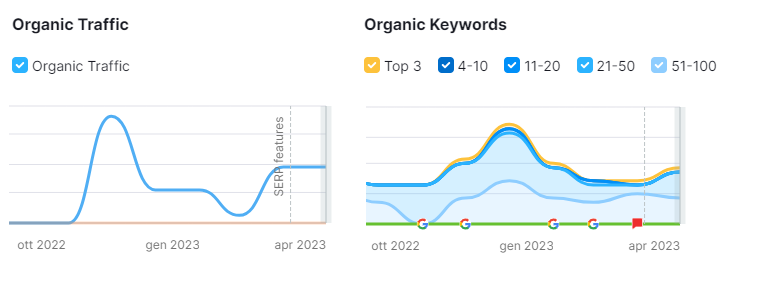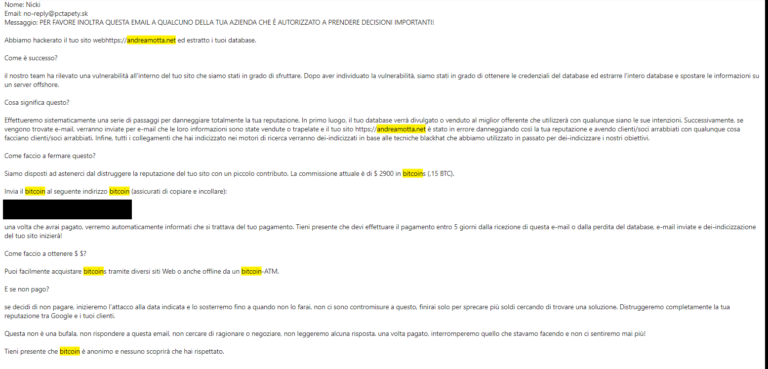Case Study: How to Protect Your Website From Negative SEO

Table of Contents
Choosing to prioritise the enhancement of your website through ethical SEO practices is far more beneficial than wasting time and effort on negative SEO. This approach yields long-lasting and positive outcomes for you, your business, and your clients.
Nevertheless, even in 2023, there are still individuals who invest their time in negative SEO.
I recently received confirmation of this during a regular audit of my website’s backlink profile. I noticed a significant number of questionable links, which I have included below.

In essence, it’s a weak attempt to send negative signals to Google by using links from unrelated websites in my industry, over-optimisation indicators, and spamming tactics, taking advantage of vulnerabilities in other websites (such as the ability to add backlinks, in the form of unmoderated comments, to their blog posts).
However, you can rest assured that Google ignores all these negative signals.
What is Negative SEO?
Negative SEO is an underhanded spamming technique designed to harm a website’s search engine ranking by employing unethical or even illegal methods.
In practical terms, it involves a series of actions aimed at generating low-quality backlinks, social media spam, duplicate content, website hacking, and other tactics that violate search engine guidelines. The ultimate objective is to penalize the targeted website through negative SEO.
The intention behind negative SEO is to decrease the targeted website’s traffic, thereby compromising its search result rankings and damaging its reputation and credibility.
In certain cases, as we will explore below, the perpetrators of negative SEO may even demand a ransom payment to cease their attack.
How is Negative SEO done?
Anyone engaging in unfair competition practices has identified backlinks as a potential weapon to harm the organic ranking of their competitors.
Creating negative backlinks is indeed possible, but it requires a significant investment of time and money to achieve meaningful results.
In fact, damaging an established competitor who has accumulated natural links over the years becomes nearly impossible, as it would require generating an unimaginable amount of spam links and an investment of hundreds of thousands of euros.
In this regard, I really like the example proposed by Ivano De Biasi in his recent book about link building: assuming a spam attack on a competitor who receives nine and a half million backlinks from over 20 thousand websites, De Biasi – one of the leading experts in off-site SEO in Italy – argues that to harm them, at least two million backlinks would need to be generated from around five thousand sites.
This would entail a considerable expense, not less than 200 thousand euros just for purchasing the links, in addition to two years of work to establish agreements with five thousand sites and produce 20 thousand pieces of content to be published with links.
Such a substantial budget, if invested correctly, could instead fuel genuine growth of the respective website, becoming a serious threat to competitor sites.
Typically, attempts are conducted at no cost using automated tools for link placement on various websites – as happened to me in the above example – or by purchasing low-cost spam services.
However, these types of links are completely ignored by Google as they hold no value.
Does Google ignore negative SEO?
Google constantly strives to improve its search algorithm to identify and penalize spamming techniques and unethical practices employed by website owners.
However, negative SEO can still have a negative impact on a site’s ranking, especially if the site has previously engaged in suspicious activities or has a low-profile backlink profile.
There are certain signals that can help Google identify negative SEO, such as a sudden increase in low-quality backlinks, an increase in duplicate content or spam in comments. However, these signals are not always easy to detect and may take time to rectify.
How to respond to a negative SEO attack?
The best advice to prevent negative SEO is to maintain a high-quality backlink profile, regularly monitor website analytics data, and implement security measures to protect the site from hacking and other malicious activities.
It is also important to react promptly if you suspect being a victim of negative SEO. Immediately inform Google through the Google Disavow Links tool, and take steps to remove low-quality backlinks and improve the website’s online reputation.
How to deactivate negative backlinks?
Disabling negative backlinks can be a lengthy and complex process, but it can be done by following these steps:
- Identify negative backlinks – use website analysis tools to identify low-quality and spammy backlinks. Tools like Ahrefs or SEMrush can be utilized to locate such links.
- Contact the owners of the sites that generated the negative backlinks and request them to remove the links.
- Utilise Google Disavow Links tool – if you are unable to remove the negative backlinks, you can use the Google Disavow Links tool to inform the search engine to ignore those links. The Disavow tool is a file that is uploaded to Google Search Console, containing a list of links you want to disavow.
- Obtain new high-quality backlinks – creating valuable content accompanied by backlinks pointing to your site can help improve the site’s reputation and offset the impact of negative backlinks.
- Constantly monitor the site’s backlink profile and take preventive measures to avoid future negative SEO.
Negative SEO: The Results of My Defense Strategies
In a nutshell – as previously mentioned, Google does not give any weight to the negative backlinks mentioned.
And if we want to be absolutely sure, we can have them removed by the owners or deliberately ask Google to ignore them through Search Console.
My website, as per this case study, demonstrates that it has not experienced any issues caused by these negative SEO attacks, which began to emerge between March and April – see below.

In fact, between March and April, the organic traffic to the site and keyword rankings on the SERP increased after a slight period of volatility due to a couple of algorithms that Google launched earlier in the year: the Product Reviews update on February 21st and the Core Update on March 15th.
So, don’t worry and don’t fall for emails like the one that follows, which are nothing more than vile extortion attempts by supposed hackers claiming to have breached your website and extracted your databases.

The individual behind this scheme falsely claims to be a hacker, threatening to expose your data and tarnish your reputation unless a certain amount is paid in Bitcoin.
Rest assured that this is nothing more than a deceptive phishing attempt, aimed at tricking you into providing payment (which they ‘conveniently’ suggest can be made in Bitcoin…).
Ultimately, there is no need for alarm regarding such potential negative SEO attacks. However, if you have concerns or suspect that you have been targeted by a fraudulent extortion attempt, it is advisable to seek guidance from an experienced SEO consultant.
Only a qualified professional in this field can in fact accurately assess the situation and provide you with appropriate advice. Please feel free to reach out to me via the Contact page for a personalised consultation or ping me an email at [email protected].
